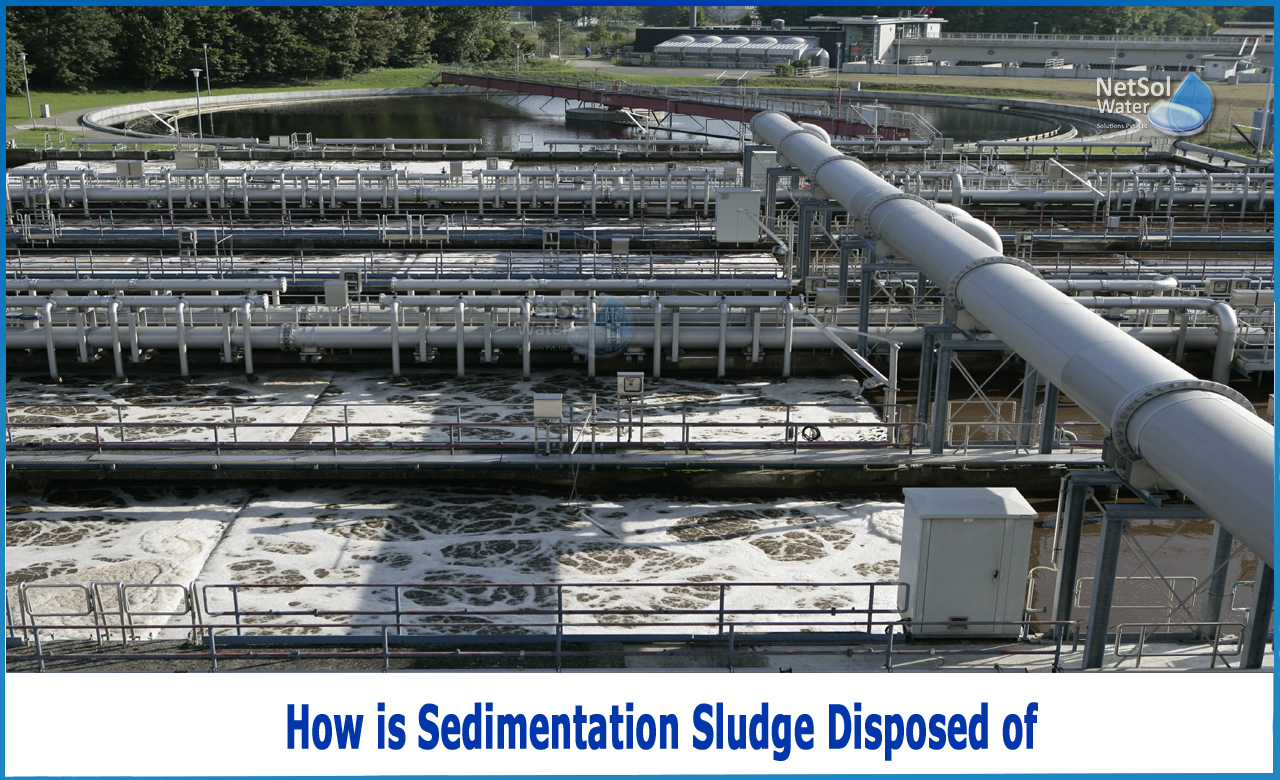What is sludge?
The final result of wastewater treatment, whether biological or physical/chemical, is sludge, or residual solids. The solids content of primary sludge ranges from 3 to 6%.
It is a semi-liquid made up of sewage particles that collects at the bottom of settling tanks. Sludge has a specific gravity of approximately, equal to water and includes moisture in varying amounts ranging from 90 to 95 percent. Sludge contains organic materials, making it potentially polluting and necessitating cautious disposal.
What are the different types of Sludge?
1: Sludge produced by plain sedimentation;
2: Sludge produced by chemical precipitation;
3: Trickling filter;
4: Activated sludge.
How is Sedimentation sludge disposed of?
Sludge is made up of organic and inorganic solids found in raw sewage that are removed in primary settling tanks, as well as organic solids formed during secondary sewage treatment and removed in secondary settling tanks. The kind of raw sewage and the treatment procedure used determines the qualities and quantity of sludge generated.
Sludge from main settling tanks is often a grey-colored, slimy (or sticky) slurry of settleable solids that accounts for 50 to 60% of applied suspended particles and tank skimming’s. This sludge has an exceedingly unpleasant odour and is difficult to drain. Because of its fibrous and gritty texture, it may easily be dewatered following chemical treatment. The typical solids concentration in this sludge is from 6 to 8%, with a volatile solids content ranging from 60 to 80 percent. Under the right operating conditions, it may be easily digested.
Sludge Disposal Techniques
Sludge is usually disposed of using the following methods:
1: Land-based disposal
2: Pipeline distribution
3: Laundry on drying beds
4: Dumping into the water
5: Heat-drying
6: Incineration
7: Ponding or lagooning
8: Digestion followed by drying
1: Land Disposal:The sludge is combined with lime and put to cultivated land to nourish it. It is subsequently ploughed and planted with crops. Trenches are excavated and filled with sludge in another technique. The sludge is covered with a thin layer of soil. This procedure needs a large amount of land.
2: Pipeline distribution:In this procedure, the sludge is piped to a neighboring farm and released. Sludge is an excellent fertilizer. This strategy necessitates a suitable amount of land as well as the participation of farm owners.
3: Drying on Drying Beds: The sludge is released on an earthen bed with drains beneath it. The subterranean drains are made out of open-jointed pipes with gravel and sand stacked on top.
4: Incineration: The sludge is burned in incinerators in this way. There are two types of incinerators: flash type and multiple-hearth type.
A tower is present in the flash kind. Wet sludge is put into it after it has been heated. The chimney produces superheated gases and water vapour, which exits down the flue. The dried sludge is taken out and utilized as incinerator fuel.
A furnace having many hearths is known as a multiple-hearth furnace. On the first hearth, the wet sludge cakes are stacked in such a way that they travel across five or six hearths. The heated air dries the cakes, and the ashes that accumulate at the bottom are removed.
5: Lagooning and ponding: A lagoon, often known as a pond, is a pit. Tiled drains are installed in the lagoon in this technique. The sludge is carried to the lagoon and discharged. After drying for 2 to 6 months, the sludge is utilized as manure. This approach is inexpensive, but it produces disagreeable odours and attracts flies, thus it is employed in areas where people do not dwell. Lime is sprinkled on top of the soil and coated with it.
Conclusion
The goal of treatment is to reduce the sludge's volume and make it appropriate for final disposal. If anaerobic digestion is chosen as part of the sludge management approach, secondary goals include using the produced gas. Furthermore, rather than paying to dispose of the sludge, an attempt should be made to sell or use it as a soil conditioner.
Netsol Water is Greater Noida-based leading water & wastewater treatment plant manufacturer. We are industry's most demanding company based on client review and work quality. We are known as best commercial RO plant manufacturers, industrial RO plant manufacturer, sewage treatment plant manufacturer, Water Softener Plant Manufacturers and effluent treatment plant manufacturers. Apart from this 24x7 customer support is our USP. Call on +91-9650608473, or write us at enquiry@netsolwater.com for any support, inquiry or product-purchase related query.



